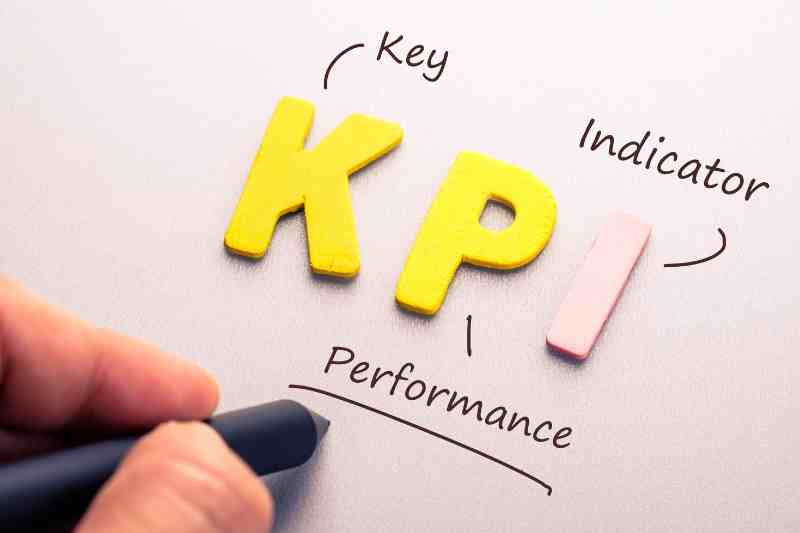Key takeaways
- Monitoring various real estate KPIs is a critical step to understanding the performance of a multifamily or commercial property.
- Real estate KPI calculations can help building owners and managers track changes, make informed decisions, track expenses, and increase revenue.
- Five of the top key performance indicators that should be on all multifamily KPIs are arrears in rent, occupancy rates, tenant retention and turnover, net operating income, and revenue growth.

As a commercial property owner or manager, you know the importance of monitoring your property’s or your portfolio’s performance. And the key to measuring your success is to properly assess various real estate metrics.
Below, we’ve gathered a list of the most important real estate KPIs every commercial property needs to monitor, plus how to calculate them. Whether you’re looking to meet some challenges or just looking for more ways to grow, keep reading for more KPI advice.
In this post, discover:
What is a KPI in real estate?
A KPI in real estate is a key performance indicator that helps estimate the performance of your real estate investment. This can be applied to investment property, business, or even individual management performance. In short, real estate KPI metrics can explain what part of your operation is working well and what needs improvement.
In most cases, KPI metrics are used to evaluate the performance of real estate agents and single-family sales. However, KPIs in multifamily and commercial real estate are just as important.
Multifamily performance metrics are useful because they help you:
- Track changes
- Make informed decisions
- Increase revenue
- Track expenses
Top 5 key performance indicators in real estate
Developing, owning, and managing a multifamily or commercial property takes a lot of time and effort, so why wouldn’t you want to know your progress toward your goals? With the following performance indicators, you can make necessary improvements that will increase the success of your property.
The top 5 real estate KPIs are:
1. Arrears in rent
If you’re familiar with running rental properties, you know that arrears in rent are simply overdue payments. You should always measure arrears in rent among your rental property KPIs because they can have a negative impact on cash flow.
Here’s how to calculate rent arrears:
- First, find your total annual rent (AR).
- Second, find the number of days in arrears (RA).
- Third, divide the annual rent (AR) by 365.
- Last, multiply that number by the days in arrears.
2. Occupancy rate
Measuring your building’s occupancy rate will go a long way in improving retention rates. When you keep records of your occupancy rates, you begin to see patterns that can help you plan and improve tenant retention.
How to manage occupancy metrics:
- First, find the total number of occupied units.
- Second, find the number of vacant units.
- Next, divide occupancy numbers by vacancy numbers.
- Then, multiply that number by 100.
This will give you a clear picture of overall rental performance. With these metrics, it’s easy to create a plan to boost occupancy.
3. Tenant turnover
Tenant turnover rates should have a solid place on any KPI metrics report. The reason is that understanding turnover rates will help managers understand the cost of turnover, create retention plans, and make accurate market predictions.
How to calculate tenant retention rates:
- First, find the total rental occupancy numbers for the beginning of a period.
- Then, find the total rental occupancy numbers for the end of that same period.
- Now, divide the second total by the first.
- Last, multiply that number by 100 to get your estimated retention rate.
4. Net operating income
Net operating income (NOI) is a metric used to calculate the value and profitability of an income-generating property. It’s a critical key performance indicator every rental property should keep track of because it shows exactly how much money your property is making.
NOI = gross operating income – operating expenses
Finding your NOI is one of the simplest calculations you can find that will effectively measure your overall success.
Learn more about NOI in real estate:
5. Revenue growth
Overall revenue growth is a great metric to watch as it helps you understand how well your property is doing from year to year.
But why is this real estate KPI important? Simply put, it makes it easy to see which parts of your property are helping to increase revenue and which are inhibiting it.
Some factors that affect revenue growth:
- Number of units
- Capital expenditures
- Amenities
- Pet fees
To calculate overall revenue growth:
- First, find the previous period’s revenue.
- Second, find this period’s revenue.
- Next, divide this period’s revenue by the last period’s revenue.
Now you can find out how much (or how little) growth your property has experienced. This is an effective way to make decisions about adding or removing things like amenities or fees.







